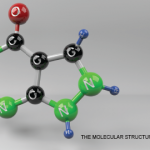
AuntSpray/shutterstock.com
A study that found men with rheumatoid arthritis (RA) died from respiratory-related illness nearly three times as often as the general population could provide insight into possible treatment options and lifestyle changes that would help them live longer.
The Study
Researchers at the Veterans Affairs Nebraska-Western Iowa Health Care System and University of Nebraska Medical Center in Omaha, Neb., conducted a longitudinal study using an RA registry that allowed them to follow male veterans from enrollment through death or the year 2013. They used the National Death Index database to obtain vital status and cause of death. They calculated crude mortality rates and standardized mortality ratios for all-cause cardiovascular disease (CVD), cancer and respiratory mortality.
The authors were particularly interested in identifying the causes of death among men who are U.S. veterans who have higher mortality rates attributable to high levels of co-morbidities.
“One of the recurrent themes when you look at all-cause mortality and different causes of death is that there are some things in here that are modifiable,” says Ted R. Mikuls, MD, a co-author of the study and Umbach Professor of Rheumatology at the UNMC Department of Internal Medicine Division of Rheumatology.
Of 1,652 men involved in the study, 332 died over a cumulative follow-up time of 6,141 patient-years. The top three causes were cardiovascular disease at 31.6%, cancer at 22.9% and respiratory disease at 15.1%, according to an article on the study published in Arthritis Care & Research.1
RA causes inflammation, which is a known risk factor for heart disease, so it was not surprising that results showed CVD contributed to nearly one-third of the deaths.
Most of the patients were white, with an average age of about 65, and had a history of frequent smoking, a high level of co-morbidity, and average disease duration of about 12 years. A majority were seropositive for rheumatoid factor or anti-cyclic citrullinated peptide.

Dr. Mikuls
Several contributing factors were associated with all-cause mortality in this group, such as older age, white race, smoking, low body weight, co-morbid disease activity and use of prednisone. Rheumatoid factor concentration was associated with CVD mortality, as were subcutaneous nodules, which were also associated with respiratory mortality. Use of methotrexate or a biologic agent was not associated with all-cause or cause-specific mortality.
Although advances have been made in treatments for RA patients, they continue to have higher death rates than the general population, the authors note. Standardized mortality ratios for these patients mirror a 30% to 70% hike in mortality risk. Other studies have shown that survival is also reduced among women with RA, but for men the absolute mortality risk appears to be disproportionately higher.
Respiratory-Related Mortality
The authors found the extent of respiratory-related mortality noteworthy.
“The most over-represented cause of death in this population by far was respiratory-related deaths,” Dr. Mikuls said in a telephone interview. “Patients in this population were about three times more likely than age- and race-matched individuals in the general population to die of respiratory causes.
“It’s easy to say, ‘Well, this is a male cohort, lots of cigarette smokers; it’s all just that.’
“I don’t know that it is,” he added, noting that preliminary results from a health study on nurses suggest similar findings of respiratory deaths also being over-represented in a predominantly female cohort.
“We all take care of patients with lung disease who have rheumatoid arthritis; interstitial lung disease and chronic obstructive lung disease are both over-represented in RA populations.
“I wouldn’t call it shocking” Dr. Mikuls said of the findings, “but it certainly was compelling.”
At 56%, chronic obstructive pulmonary disease was the most common respiratory cause of death and was followed by ILD (22%). Both are known to be over-represented in RA.
Disease Activity
Another important finding, said Dr. Mikuls, is that a lack of disease activity at time of enrollment appeared to tilt in favor of survival. If RA was in remission, mortality risks were not substantially elevated compared with population norms, noted the authors.
In contrast, researchers found that higher disease activity at enrollment was associated with both all-cause and cause-specific mortality, which demonstrates a striking dose-dependent relationship with cardiovascular death, according to the article. Previous studies have shown similar findings, noted Dr. Mikuls.
“It would suggest to me that tight disease control is not only good for joint symptoms and quality of life, but may actually extend survival in patients.”
The findings suggest that it may be possible to prolong survival through intervention, smoking cessation programs and other modification efforts. For example, the results revealed that people who are underweight or on prednisone have higher mortality risk. So a rheumatologist may decide to help a patient make modifications to limit those risks, explained Dr. Mikuls.
“Prednisone use has been associated particularly [with] cardiovascular mortality in other studies, as well,” he said. “We saw it in all-cause mortality; we didn’t quite see a significant relationship for cardiovascular, but we certainly saw it trending in that direction.
“The takeaway being … at least for all-cause mortality, reducing prednisone while maintaining disease control is going to be important.”
Cardiovascular risk associated with RA has received much greater attention in the past decade, with an emphasis on tighter disease control of such risk factors as hypertension, diabetes and dyslipidemia, lead author Bryant R. England, MD, of the Veterans Affairs Medical Center, explained in an email to The Rheumatologist.
“Our study revealed that respiratory-related deaths were the most over-represented cause of death in our RA cohort,” Dr. England said. “As a result, we should apply the same focus to identifying, treating and preventing respiratory disease as we did to cardiovascular disease.
“For researchers, this requires developing better methods, such as biomarkers, for the identification of RA-associated respiratory disease early in the disease course. For clinicians, this demands aggressive management of patients’ respiratory conditions, often in collaboration with a pulmonologist, and most importantly encouraging and assisting with smoking cessation efforts in those who are tobacco users.”
Catherine Kolonko is a medical writer based in Oregon.
References
- England BR, Sayles H, Michaud K, et al. Cause-specific mortality in male US veterans with rheumatoid arthritis. Arthritis Care Res (Hoboken). 2016 Jan;68(1):36–45.



